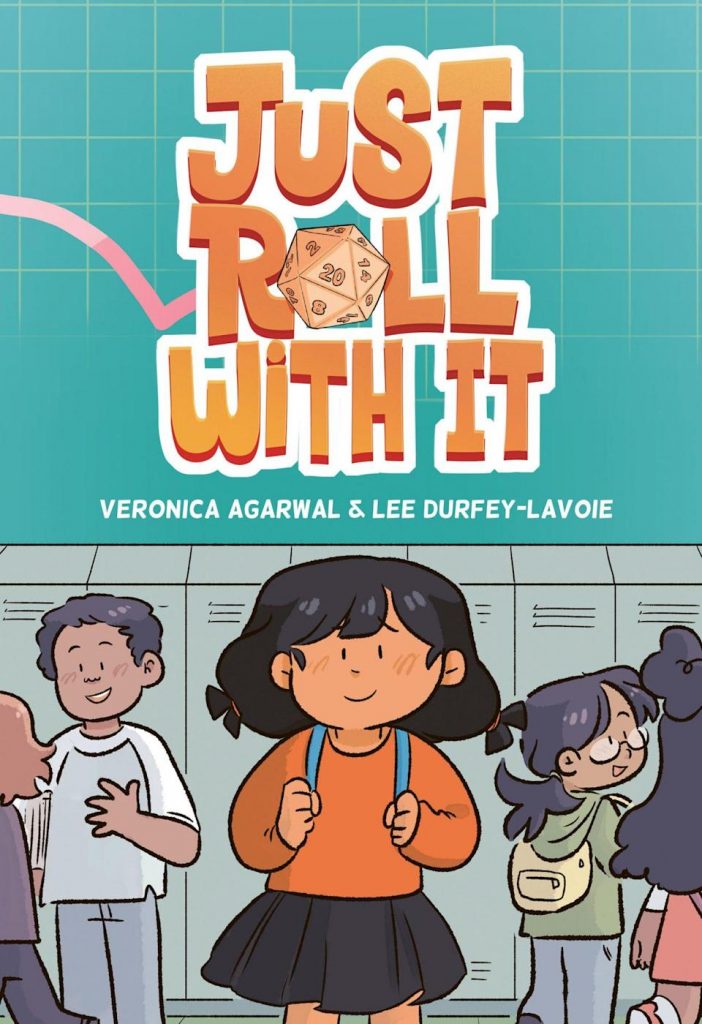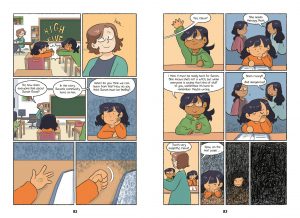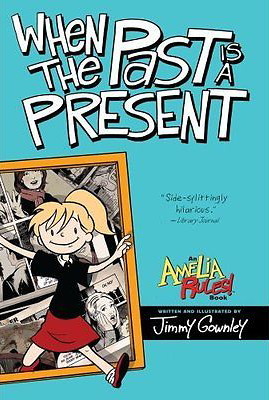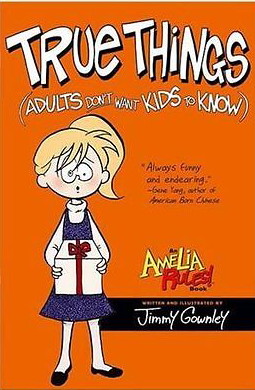Review by Frank Plowright
In Luke Rhinehart’s 1971 first person novel The Dice Man, a psychiatrist commits to make all decisions on the roll of a die. Lee Durfey-Lavoie broadly adapts that idea for her protagonist Maggie, updating it slightly via the use of a multi-sided role-playing device rather than the traditional six sided cube. It’s Maggie’s comfort as she faces the scary experience of beginning sixth grade with all the new subjects she has to learn. If she sees a high number all will be well, but if not… As if that isn’t intimidating enough, she thinks she’s seeing a dragon in the school grounds.
The purpose of Just Roll With It is to highlight some forms of Obsessive Compulsive Disorder, or OCD, whereby sufferers are compelled to repetitive behaviour as a means of avoiding unpleasant thoughts. It manifests in multiple ways, and in an afterword cartoonist Veronica Agarwell notes her own diagnosis made sense of many of her habits. OCD is a broad spectrum, and as this graphic novel is aimed at young adults, it takes a simpler approach by only featuring a few.
With an admirable purpose, and Agarwell’s attractive cartooning and clarity, it would be nice to note that Maggie’s story is a delight that will reach the right audience and maybe set off a few lightbulbs among them. That, however, is unlikely. In addition to clocking in at over an intimidating three hundred story pages, so many of those pages are wasted. Even taking into account the age group she’s writing for Durfey-Lavoie can’t distil events to their essence, so there are endless scenes of ultimately very little value. When the story starts Maggie just feels confused and has no idea her feelings may relate to a condition. It takes seventy pages to reach that recognition, and 240 before Maggie begins looking into OCD.
It means scenes that do count are lost in too many meandering pages, and some are some very good scenes, such as Maggie being given a pep talk by her sister about what a book means to her, or the dragon coming to personify possible negative outcomes.
Overall this is a missed opportunity with moments of charm and advice among too much padding.





